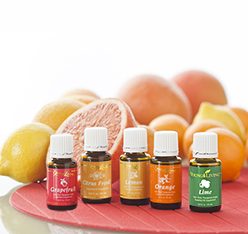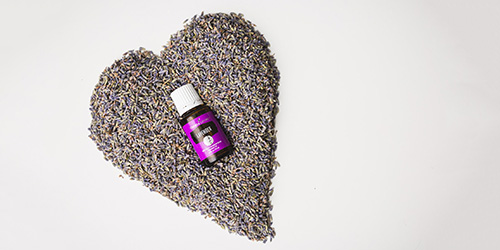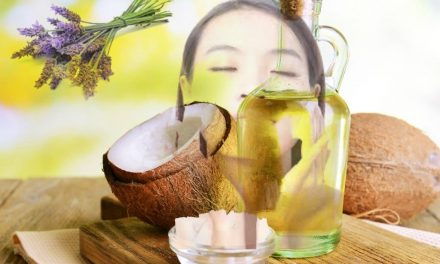
What Do You Know About Limonene
Limonene & Citrus Oils
Limonene
With recent studies discounting the benefits of isolated fiber and lengthy reviews supporting diets rich in fruits and vegetables, it is now clear that there are components in a plant‑based diet other than traditional nutrients that can reduce cancer risk. In the 2000 updated version of the Dietary Guidelines for Americans, the USDA recommends eating plenty of fruits and vegetables because they provide not only vitamins, minerals, and fiber, but other substances experts are labeling “phytochemical s.”
Steinmetz and Potter in a 1996 comprehensive review identified more than a dozen classes of these biologically active plant chemicals or phytochemicals. A list of these phytochemicals is found in the Journal of the American Dietetic Association and includes familiar headliners such as indole‑3‑carbinol, allium compounds, isoflavones, saponins, phytosterols, limonene, lutein lycopene, and flavonoids. Steinmetz and Potter found in the majority of these studies (at least 22 animal studies), that animals fed more vegetables or fruits experienced fewer tumors, smaller tumors, fewer metastases, less DNA damage, higher levels of enzymes involved in the detoxification of carcinogens, or other outcomes indicative of lower cancer risk. Even more important, phytochemicals from fruits and vegetables seemed to enhance longevity.
Limonene ‑ Not just from Limes
Limonene Content of Selected Essential Oils
Essential Oil % Limonene:
Grapefruit 95.12
Tangerine 94.62
Orange 91.40
Mandarine 72.36
Lemon 65.44
Elemi 50.50
Lime 49.01
Bergamot 40.39
Ledum 23.34
Dill 21.26
Black Pepper 17.42
Frankincense 16.40
Fir 15.80
Neroli 15.64
Spearmint 15.16
Myrtle 10.54
Pine 10.25
One phytochemical of particular importance in cancer prevention is d‑limonene (also known as limonene). Limonene is a widely distributed, natural, nontoxic compound found in citrus fruits, spices, herbs, and some conifer essential oils. Squeezing orange and lemon rinds and collecting the oily residue concentrates limonene. In fact, the essential oils of grapefruit, tangerine, and orange contain over 90 percent limonene.
This simple monocyclic monoterpene compound has been found in nearly 100 studies in animals and in humans to prevent cancer, stop the progression of cancer, and destroy and dismantle cancer. Limonene has been shown to be active against several types of tumors, including mammary, skin, lung, liver an fore-stomach in rodents and colon and breast cancer ‘in humans. Incorporating limonene in your diet is a healthy lifestyle choice that helps promote normal cell life cycles.
Normal Cells out of Control: Cancer Metabolism
In order to understand the function of Limonene ‘in promoting normal cell life cycles we must first discuss the events that lead to cancer.
All cells suffer mutations. Bruce Ames of the University of California at Berkeley estimates that the DNA blueprint of each of the cells in the human body is attacked by free radicals over 10,000 times per day. Over time such free radical attack can create DNA mutations that can turn a normal cell into a cancerous one.
Mutations can be caused by environmental agents, toxic products of metabolism, or they can arise spontaneously. As discussed earlier, certain environmental risk factors are known to promote or cause mutations. The body has a method in place *to destroy mutated cells. This method is called programmed cell death or apoptosis. Apoptosis happens to all cells, mutated and normal. It allows cells a finite number of divisions before it terminates itself. Cell to cell communication molecules on the surface of he cell and secretions in their environment create awareness in each cell to its life cycle.
Mutated cells become a threat when the programmed cell death ‘is not performed, allowing mutated cells to grow and divide endlessly and recklessly until they have thoroughly invaded the body.
While the process of forming a cancerous growth is very complex experts generally agree that there are three stages in the formation of cancer cells: initiation, promotion/progression, and final metastasis.
During initiation, the cell is mutated in a way that makes it immortal. Either a loss or gain of function not found in a normal cell causes it to continue to live past its programmed death.
Next, during the promotion/progression stage, the cell is transformed and no longer acts like a normal cell. The transformed cell is unrestricted in both its life‑span and localization. Proteins called farnsyl groups embed in the outer cell wall, causing problems with cell to cell communication. Cells will multiply out of control, literally piling up on top of their neighbors.
The third and final stage is metastasis. Here, cancer cells are no longer localized to one ever‑growing tumor. Instead, they enter and blood vessels and lymph nodes, creating new cancer growths throughout the body. These new growths begin consuming the bulk of available energy. As cancer progresses, the body is literally eaten alive with out of control cancer cells.
Limonene: Stopping Cancer at its Birth
The cancer process is swift and often goes unnoticed until drastic measures must be taken. The key is prevention with chemoprevention agents like limonene. The phytonutrient limonene has been found in numerous animal and human studies to help stop cancer in its three stages; initiation, promotion /progression, and metastasis.
The bulk of the animal clinical trials‑over 50 studies support the fact that limonene strongly inhibits the initiation of cancer growth. In other words, it helps prevent the start of cancer.
Several limonene researchers conclude limonene is most active at the initiation stage. In 1991, a randomized, placebo controlled study done by researchers at the University of Minnesota, Wattenberg and Coccia, examined the administration of 0.2 ml limonene to mice one hour prior to the administration of the carcinogen NNK twice a week for 8 weeks. At the end of 28 weeks the mice were examined for tumor growth. The group of mice receiving limonene had less than one‑third (< 33 percent) the number of cancerous tumors compared to the control group. Wattenberg and Coccia’s findings were consistent with eleven other clinical trials conducted by other researchers.
Early studies by Hombureger in 1971 and VanDuuren in 1976 found that limonene inhibits the initiation of skin cancer. Later studies by Wattenberg in 1983, Elegbede in 1984, Elson in 1988, Russin in 1989, and Moore and Maltzman in 1991 confirmed these early findings. In 1991, Wang found limonene prevented rodent mammary cancer. Wattenberg in two separate studies (1985 and 1989) found that limonene inhibits the initiation of lung and fore-stomach tumors. Further research (Esther et al., 1998; Esther et al., 1998, Rnjit et al., 1999; Uedo et al., 1999) has shown limonene inhibits cancer formation by increasing the levels of phase 11 liver enzymes that bind a wide variety of carcinogens to form less toxic conjugates that are readily eliminated by the digestive and respiratory systems.
Limonene Stops Cancer Promotion and Progression
The ability of limonene to inhibit the progression/promotion stage of cancer has been well documented. In 1989 researchers Maltzman, Hurt, Elson, Tanner, and Gould of the University Wisconsin fed rats the carcinogen NMU for one week prior to the administration of limonene. At the conclusion of the 23 weeks, researchers found rats receiving limonene during the earliest stages of cancer (the so‑called promotion/progression stage) had about 50 percent fewer mammary tumors per rat compared to the control group. These findings were confirmed by Elson et al., 1988; Crowell et al., 1991; Moore et al., 1991; and Crowell et al., 1994.
Researchers later found that limonene inhibits the progression/promotion of cancer cells by stopping the protein called farnesyl group from attaching to the surface of the mutated cell, thereby reducing the deadly escalation of cell to cell miscommunication. Limonene also allows the mutated molecule to exit the cell and be destroyed before becoming cancerous (Schafer et al., 1992, Kato et al., 1992, Crowell et al., 1992).
Limonene Reduces Tumor Size and Blocks Cancer Metastasis
Not only does limonene stop cancer growth from starting and prevent existing cancer growth from spreading but it has also been shown in animals to regress existing tumors. Elgebede et al. of the University of Wisconsin conducted a clinical trial in 1986 to evaluate limonene’s anticancer effect against carcinogen‑ induced tumors. Rats were administered the carcinogen DMBA continuously until a large tumor mass was detected. Rats were then placed on a 10 percent limonene diet for 21 weeks. Researchers found limonene caused an 80 percent regression of mammary tumors. Later studies confirmed Elgebede’s results (Haag et al., 1992; Jirtle et al., 1993; and Chander et al., 1994).
How Our Body Uses Limonene
A research team at the University of Wisconsin set out in 1994 to connect the anti‑cancer benefits of d-limonene on rats to its benefits on humans. Crowell et al. gave humans 100 mg/kg of limonene to ingest. Human blood samples were taken at three different times and analyzed for limonene‑metabolites on a gas chromatograph/mass spectrometer. The human metabolites were then compared to rat metabolite researched in previous studies. Crowell et al. concluded that rat metabolism of limonene closely parallels that of humans in terms of both the specific metabolites formed and the time in which they formed. These results suggest that limonene will have similar cancer‑treating benefits in humans. And the fact that limonene caused no toxicity to humans‑even at huge doses of 100 mg/kg of body weight‑‑underscores its enormous potential in cancer remission therapy.
Limonene and Advanced Cancer Patients
Vigushin and his research group from the Department of Medical Oncology at theCharing Cross Hospital in London were the first in 1998 to research d‑limonene in advanced cancer patients. The first part of the study (Phase 1) focused on investigating toxicity and maximum tolerated dose for patients with advanced solid tumors. The maximum tolerated dose was set at 8 grams/m2 or 16 grams/day. The second part of the study (Phase 11) focused on the anti‑cancer effect of d‑limonene on advanced breast and colon cancer patients. Researchers found promising results: One partial response in a breast cancer patient on 16 grams per day was maintained for I I months. Three patients with colon cancer showed stabilization of disease for longer than six months on d‑limonene. The first of the three had no measurable cancer progression for nine months at a dose of I gram/day.
Vigushin and colleagues were intrigued that the breast cancer patient responded so well when the dose she was taking was almost five times less than the minimum effective dose predicted by the animal studies.
Lifestyle Survival Tool
Limonene is a natural plant phytochemical that has been proven in humans and in animals to have chemopreventative and chemotherapeutic benefits. Overwhelming evidence points to the benefits of supplementing the diet with 5 ml of limonene per day (see chart 1) along with a diet rich in fruits and vegetables to add life to years. Epidemiological studies as well as clinical trials support this healthy lifestyle choice for a long, productive, cancer free life.
References
Mokdad, A.H., Bowman, B.A., Ford, E.S., Vinicor, F, Marks, J.S., Koplan, J.P., The Continuing Epidemics of Obesity and Diabetes in the United States. JAMA, Vol. 286 No. 10, September 12, 2001.
Sahyoun, N.R., Lentzner, H., Hoyert, D., Robinson, K.N., Trends in Causes of Death Among the Elderly. CDC, March 2001.
Fuchs, C.S., Giovannucci, E.L., Colditz, G.A., Hunter, D.J., Stampfer, M.J., Rosner, B., Speizer, F.E., Willett, W.C., Dietary Fiber and the Risk of Colorectal Cancer and Adenoma in Women. N Engl J Med, 340(30):169‑76, January 21, 1999.
Bonithon‑Kopp, C,, Kronborg, 0., Giacosa, A., Rath, U., Faivre, J., Calcium and Fibre Supplementation in Prevention of Colorectal Adenoma Recurrence: a Randomised Intervention Trial. European Cancer Prevention Organisation Study Group. Lancet, 356(9238):1300‑6, October 14, 2000.
Block, G., Patterson, B., Subar, A., Fruit, Vegetables, and Cancer Prevention: a Review of the Epidemiological Evidence. Nutr Cancer, 18(l):1‑29, 1992.
United States Department of Agriculture, United States Department of Health and Human Services, Nutrition and Your Health: Dietary Guidelines for Americans, Home and Garden Bulletin No. 232, Fifth Edition, 2000.
Steinmetz, K.A., Potter, J.D., Vegetables, Fruit, and Cancer Prevention: A Review. J Am Diet Assoc, 96:1027‑1039, 1996.
Wallenberg, L.W., Coccia, J.B., Inhibition of 4‑(methylnitrosamino)‑1‑(3‑pyridyl)‑1‑butanone Carcinogenesis in Mice by D‑Limonene and Citrus Fruit Oils. Carcinogenesis, Vol. 12, No. 1, pp. 115‑117, 1991,
Homburger, F., Treger, A., Boger, E., Inhibition of Murine Subcutaneous and Intravenous Benzo(rst) Pentaphene. Carcinogenesis by SweetOrangeOils and D‑Limonene. Oncology, 25(1):1‑10, 1971.
B. L. Van Duuren and B. M. Goldschmidt. Cocarcinogenic and tumor‑promoting agents in tobacco carcinogenesis. J. NatI. Cancer Inst. 56 (6):1237‑1242, 1976.
L. W. Wattenberg. Inhibition of neoplasia by minor dietary constituents. Cancer Res. 43 (5 Suppl):2448s‑2453s, 1983.
J. A. Elegbede, C. E. Elson, A. Qureshi, M. A. Tanner, and M. N. Gould. Inhibition of DMBA induced mammary cancer by the monoterpene d‑limonene. Carcinogenesis 5 (5):661‑664, 1984.
C. E. Elson, T H. Maltzman, J. L. Boston, M. A. Tanner, and M. N. Gould. Anti‑carcinogenic activity of d‑limonene during the initiation and promotion/progression stages of DMBA‑induced rat mammary carcinogenesis. Carcinogenesis 9 (2):331‑332, 1988.
W. A. Russin, J. D. Hoesly, C. E. Elson, M. A. Tanner, and M. N. Gould, Inhibition of rat mammary carcinogenesis by monoterpenoids. Carcinogenesis 10 (11):2161‑2164, 1989.
Moore, C.J.. Kerman, W.S., Wang, B.C., Gould, M.N., Inhibition of Ras‑induced mammary carcinogenesis by limonene. Proc Am Assoc Cancer Res, 32:131, 1991.
Maltzman, T.H., Gould, M.N., Mechanism of action of dietary limonene during the initiation stage of DMBA‑induced rat mammary carcinogenesis. Proc Am Assoc Cancer Res, 31:124,1991.
B. C. Wang, W,S. Kerman, J. Yasukawa‑Barnes, M. J. Lindstrom, and M. N. Gould. Carcinoma induction following direct in situ transfer of v‑Ha‑ras into rat mammary epithelia] cells using replication‑defective retrovirus vectors. Cancer Res. 51 (10):2642‑2648, 1991.
L. W. Wattenberg, A. B. Hanley, G. Barany, V. L. Sparnins, L. K. Lam, and G. R. Fenwick. Inhibition of carcinogenesis by some minor dietary constituents. Princess Takamatsu Symp. 16:193‑203, 1985.
L. W, Wattenberg, V. L. Sparnins, and G. Barany. Inhibition of N‑nitrosodiethylamine carcinogenesis in mice by naturally occurring organosuffur compounds and monoterpenes. Cancer Res. 49 (10):2689‑2692, 1989.
E. M. van Lieshout, M. P. Ekkel, M. M. Bedaf, W. A. Nijhoff, and W. H. Peters. Effects of dietary anticarcinogens on rat gastrointestinal glutathione peroxidase activity. Oncol. Rep. 5 (4):959‑963, 1998.
R. K. Giri, T. Parija, and B. R. Das. d‑limonene chemoprevention of hepatocarcinogenesis in AKR mice: inhibition of c‑jun and c‑myc. Oncol. Rep. 6 (5):1123‑1127, 1999.
N. Ledo, M. Tatsuta, H. lishi, M. Baba,N. Sakai, H. Yano, and T. Otani. Inhibition by D‑limonene of gastric carcinogenesis induced by N‑methyl‑N’‑nitro‑N‑nitrosoguanidine in Wistar rats. Cancer Left. 137 (2):131‑136, 1999.
2T. H. Maltzman, L. M. Hurt, C. E. Elson, M. A. Tanner, and M. N. Gould. The prevention of nitrosomethylurea‑induced mammary tumors by d‑limonene and orange oil. Carcinogenesis 10 (4):781‑783, 1989.
P. L. Crowell, R. R. Chang, Z. B. Ren, C. E. Elson, and M. N. Gould. Selective inhibition of isoprenylation of 21‑26‑kDa proteins by the anticarcinogen d‑limonene and its metabolites. J.Biol.Chem. 266 (26):17679‑17685, 1991.
P. L. Crowell and M. N. Gould. Chemoprevention and therapy of cancer by d‑limonene. Crit Rev. Oncog. 5 (1):1‑22, 1994.
W. R. Schafer and J. Rine. Protein prenylation: genes, enzymes, targets, and functions. Annu. Rev. Genet. 26:209‑237, 1992.
K. Kato, A. D. Cox, M. M. Hisaka, S. M. Graham, J. E. Buss, and C. J. Der, Isoprenoid addition to Ras protein is the critical modification for its membrane association and transforming activity. Proc. Natl. Acad. Sci. U.S.A 89 (14):6403‑6407, 1992.
P. L. Crowell, S. Lin, E. Vedejs, and M. N. Gould, Identification of metabolites of the antitumor agent d‑limonene capable of inhibiting protein isoprenylation and cell growth. Cancer Chemother. Pharmacol. 31 (3):205‑212, 1992.
J. A. Elegbede, C. E. Elson, M. A. Tanner, A. Qureshi, and M. N. Gould. Regression of rat primary mammary tumors following dietary d‑limonene. J. NatI. Cancer Inst. 76 (2):323‑325, 1986.
J. D. Haag, M. J. Lindstrom, and M. N. Gould. Limonene‑induced regression of mammary carcinomas. Cancer Res. 52 (14):4021‑4026, 1992.
R. L. Jirtle J. D. Haag, E. A. Ariazi, and M. N. Gould. Increased mannose 6‑phosphate/insulin‑like growth factor 11 receptor and transforming growth factor beta 1 levels during monoterpeneinduced regression of mammary tumors. Cancer Res. 53 (17):3849‑3852, 1993.
S. K. Chandler, A. G. Lansdown, Y. A. Luqmani, J. J. Gomm, R. C. Coope, N. Gould, and R. C. Coombes. Effectiveness of combined limonene and 4‑hydroxyandrostenedione in the treatment of NMU‑induced rat mammary turnouts. Br. J. Cancer 69 (5):879‑882, 1994.
Metab Crowell, P.L., C.E. Elson, H.H. Bailey, A. Elegbede, J.D. Haag, and M.N. Gould. Human metabolism of the experimental cancer therapeutic agent d‑limonene. Cancer Chemother. Pharmacol., 35, 31‑37 (1994).
Human Vigushin D.M, G.K. Poon, A. Boddy, J. English, G.W. Halbert, C. Pagonis C., M. Jarman, R.C. Coombes. Phase I and pharmacokinetic study of D‑limonene in patients with advanced cancer. Cancer Research Campaign Phase 1/11 Clinical Trials Committee. Cancer Chemother. Pharmacol. 42(2): 111‑7 (1998).












